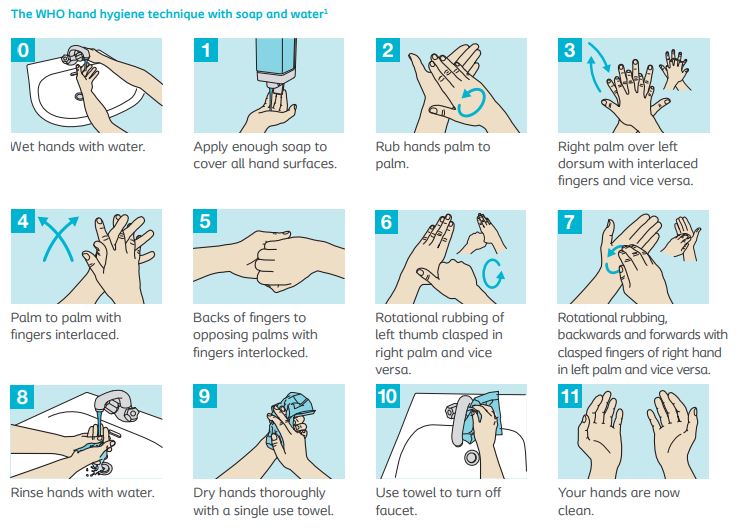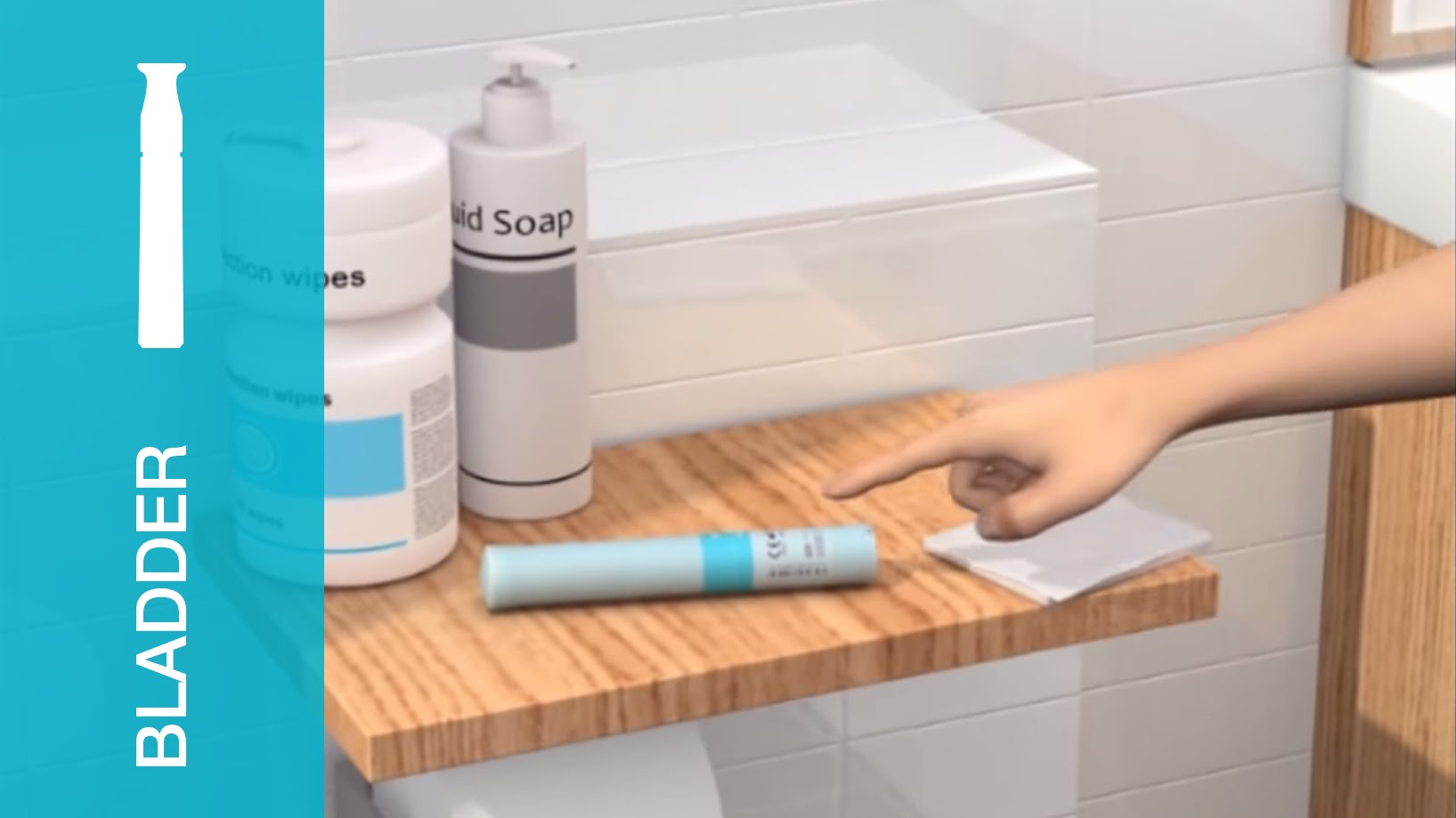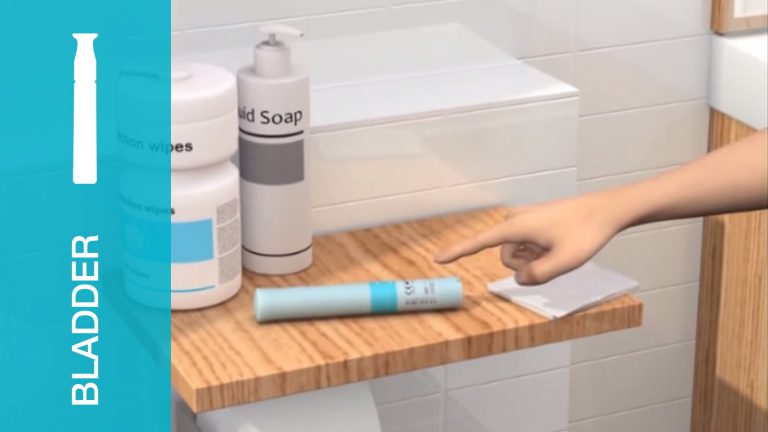Order Catheter Supplies from Comfort Medical
- Bard
- Coloplast
- Cure Medical
- Hollister
- Rochester Medical
New Customer Enrollment

Free Comfort Kit with your first order
Limited Time Offer
Prevent UTI's
Medicare covers up to 200 catheters/month
In April 2009, Medicare increased its coverage for catheters from 4 / month to 200 / month. Now, each time you cath, you are advised to use a new, sterile catheter.Stop washing and reusing the same catheter
Throw away the used catheters! Medicare, the FDA, and the VA are in agreement that catheters should not be washed and reused. They are single-use only. Due to this change, the chance of a dangerous infection is majorly decreased. Make sure to follow the “single-use only” strategy indicated on the packaging of your catheters to ensure your compliance with healthcare guidelines.Reduce Urinary Tract Infections (UTIs)
It is officially unsafe to wash and reuse a catheter. It can lead to debilitating and expensive Urinary Tract Infections, the second most common body infection in both men and women.Types of catheters
Straight Catheters
Straight catheters are part of intermittent catheterization, the periodic emptying of the bladder with a sterile catheter each time a person caths. This allows catheter users to prevent dangerous UTIs. Straight catheters are designed for patients who have chronic bladder problems and are able to perform the catheterization themselves. Additionally, they are generally used for a quick “in-and-out” and are to be used only one time. Unlike Foley-style catheters, they do not have a round balloon at the end to secure it in place. Straight catheters are typically available in straight and curved packaging, designed for males, females, and even pediatric usage, and come in a variety of sizes.Coudé Catheters
A coudé catheter, or sometimes called a coudé tip catheter, is a urinary catheter with a slightly curved tip that designed for easy insertion. Coudé catheters are similar to straight catheters, but their curved tip is used to navigate around obstacles like enlarged prostate or urethral strictures. More commonly used in men, coudé catheters can be used in women when they develop obstructions that require the use of catheter with a curved design. In addition to being used by doctors and nurses, coudé catheters can be used at home by patients who may need to self-catheterize for a variety of reasons. Coudé catheters come in different types as well. These include a tapered tip, olive tip, or Tiemann tip catheter. Interestingly, the design of the coudé catheter was created around 1800 by Dr. Emile Coude and was initially named a “biCoude” catheter, as it had two bends.Closed-Kit System
The Closed-Kit System prevents and often resolves repeated UTIs as well as other types of infections. This method is the safest form of catheterization because it is the most sterile. The kit comes with supplies to ensure that the catheter does not come into contact with any bacteria before entering the bladder.External Catheters
External catheters are also known as condom or “Texas” catheters because external catheters continuously assist with leakage from the bladder. They conveniently roll over the penis like a condom and attach to a discreet collection bag.Intermittent Catheters
With intermittent catheters, patients insert and remove the urinary catheter several times a day, eliminating the need to wear a continuously draining catheter. Leaving urine in your bladder for a long time can lead to a distended bladder or a Urinary Tract Infection (UTI). Intermittent catheterization may help reduce these potential problems, giving you more freedom for a better quality of life. And, because you can remove the urinary catheter when your bladder is emptied, it allows you to live a more comfortable, active lifestyle. This type of catheter may also improve urinary incontinence in some patients.Indwelling Catheters
Indwelling catheters are also called internal or “foley” catheters. This product is generally inserted by a medical professional. The indwelling catheter design is similar to intermittent catheters; however, an inflatable balloon anchors the catheter in the bladder for long periods of time. Indwelling catheters remain in the bladder for 3-4 weeks depending on a physician’s instructions and indicated plan of care.Hand hygiene

Why perform self-catheterization?
Self-catheterization steps for
Women
Men
1
Prepare equipment and yourself
Assemble equipment together and place in an accessible area. Equipment needed: catheter, moist towelette or soap and water, and dry hand
towel. When using an uncoated catheter a water soluble lubricant is recommended.
Inspect catheter before use. Do not use the product if device or packaging is damaged.
Wash hands thoroughly with soap and water and dry.
Position yourself comfortably with thighs spread apart. For many women, it is preferred to sit on the toilet or in a chair across from the toilet.
2
Insert Catheter
With one hand, separate the labia and wash from front to back with soap and water or a moist towelette.
If using an uncoated catheter, lubricate the end that will go into the urethra. Use a water-soluble lubricant and lubricate the tip and the first 6″ of the catheter. If using a coated catheter, no additional lubricant is needed, it will be ready to use.
Slowly and gently insert the catheter into the urethra until the urine begins to flow (approximately 1-1½”). Then insert the catheter about 1″ further and hold it there until urine stops flowing.
3
Withdraw and check
When urine stops, slowly begin to withdraw the catheter. If using a straight tip catheter, it is recommended that you slightly rotate the catheter as you withdraw and stop each time more urine drains out. If using a coudé catheter, DO NOT rotate upon withdrawal.
Check the color, odor and clarity of the urine to be aware of any changes that you may need to report to your doctor or nurse.
1
Prepare equipment and yourself
Assemble equipment together and place in an accessible area. Equipment needed: catheter, moist towelette or soap and water, and dry hand
towel. When using an uncoated catheter a water soluble lubricant is recommended.
Inspect catheter before use. Do not use the product if device or packaging is damaged.
Wash hands thoroughly with soap and water and dry.
Position yourself in front of the toilet or in a chair across from the toilet. Many men prefer to stand during the catheterization procedure.
2
Insert Cahteter
Hold the penis up with one hand and wash the tip and head (glans) of the penis with soap and water or a moist towelette. You should wash in a circular motion starting at the urethra (the tip of the penis) and then moving down the shaft.
If using an uncoated catheter, lubricate the catheter end that will go into the urethra. Use a water-soluble lubricant and lubricate the tip and the first 6″ of the catheter. If using a coated catheter, no additional lubricant is needed, it will be ready to use.
Hold the penis straight up from the body at a 60 to 70-degree angle from the body. Slowly and gently insert the catheter into the urethra until the urine begins to flow (approximately 6-8″). Then insert the catheter about 1″ further and hold it there until urine stops flowing.
Four keys to better bladder health
1
Empty bladder
Empty bladder
2
Get suficient to drink
Maintain adequate liquid intake. Follow your clinician’s recommendation for fluid intake. Every person needs daily fluids to maintain their health. Your doctor or nurse will advise you on your special fluid needs as they relate to your catheterization program. Eight 8 oz. glasses of liquid a day has been the recommended standard, but is not for everyone. Beverages containing caffeine (cola drinks, coffee, tea, and some energy drinks) and artificial sweeteners are known bladder irritants and may need to be kept to a minimum.
3
Discard catheter after use
Discard your intermittent catheter after each use. Effective April 1, 2008, the Medicare policy on intermittent catheters changed. The Medicare policy provides one new sterile intermittent catheter (and one sterile packet of lubricant) for each catheterization. Most insurance plans follow these Medicare guidelines.
4
Wash hands
Effective hand washing. Wash your hands both before and after catheterizing, to help prevent urinary tract infections (UTI’s). As a catheter user, it is especially important to wash your hands correctly and frequently, to avoid the transfer of germs to your catheter or your body. A catheter can pick up bacteria and push the bacteria into the bladder.
Testimonials From Satisfied Customers
Check out the excellent reviews and testimonials from verified Comfort Medical patients. We are proud to offer our customer service to service your needs. Let us help you.
Bill Powell

William P., Jacksonville, FL
Comfort Medical interfaced with my doctor and the insurance company to make sure I got what I needed. There was no out-of-pocket costs with Comfort Medical. They seemed very keen to what my true needs were, and they actually listened to me. I believe that’s home run.
Dale W.
I committed my catheter business to a different company for years. I had become increasingly dissatisfied with my old supplier and was looking for a new one. The professionalism of the product specialist I spoke with convinced me that I found the right company. The straight catheters provided were soft, gentle, and easy to use.
Use our guides
Catheter FAQ
A urinary catheter is a hollow tube placed in the body to drain and collect urine from the bladder. Urinary catheters come in a variety of sizes and types.
If your bladder is not emptied regularly, it may cause urinary tract infections. These infections start in the bladder but can move to the kidneys and cause serious renal damage. Even small amounts of urine left in the bladder can cause infections.
Neurogenic Lower Urinary Tract Dysfunction (formerly Neurogenic Bladder) is a condition where neurological damage has led to bladder dysfunction such as urinary retention, urinary incontinence, or both.
Although incontinence becomes more common with advancing age, it is not just older people who are affected. Effective solutions are available, so it should not stop you from living a full and active life, whatever your age.
It is possible to manage incontinence effectively in your everyday life. A doctor or nurse should be able to help find a solution that makes it possible to continue a social life and everyday activities.
Most types of incontinence can be treated or improved through lifestyle changes, pelvic floor exercises, bladder training, medication or surgery. If a cure is not possible, or a temporary solution is required, products such as intermittent catheters, external catheters, or absorbent products can be very helpful.
No. Adequate hydration is vital for all body functions, including immune system, temperature regulation, metabolism, cognitive function and general wellbeing1. It is very important that you drink enough fluids* to keep the urinary system healthy.
*All types of fluids may not be suitable for everyone. Please consult with your doctor or nurse to identify
1https://academic.oup.com/nutritionreviews/article/63/suppl_1/S6/1927737
The clinical manifestations of a UTI are:
- urinary frequency and urgency
- painful urination (dysuria)
- flank pain and / or suprapubic pain
- Blood in the urine (microscopic or gross)
- Increased nighttime urination (nocturia)
- Malaise, particularly in the elderly
- Urinary incontinence
- Neurogenic patients may experience increased muscle spasticity or autonomic dysreflexia
- Fever may indicate a more serious infection of the upper urinary tract and kidneys.
Note: Cloudy urine in the absence of the above symptoms is most often pyuria or inflammation and not a UTI. Dark colored and / or strong-smelling urine in the absence of the above symptoms is most often related to poor fluid intake and concentrated urine.
If you have any of the above symptoms, talk to your doctor or nurse.
There are ways to reduce the risk of urinary tract infections from catheters:
- Speak to your healthcare professional about your catheterization frequency and technique. Always follow your healthcare provider’s instructions for catheter insertion and number of times per day.
- Ensure you have clean hands and equipment when catheterizing
- Drink sufficient amount of fluid during the day to wash out the urinary tract
- Make sure that the bladder is fully emptied every time you catheterize
This information is for educational purposes only. It is not intended to substitute for professional medical advice and should not be interpreted to contain treatment recommendations. Always talk to your doctor about symptoms, risks, diagnosis, and treatment.




